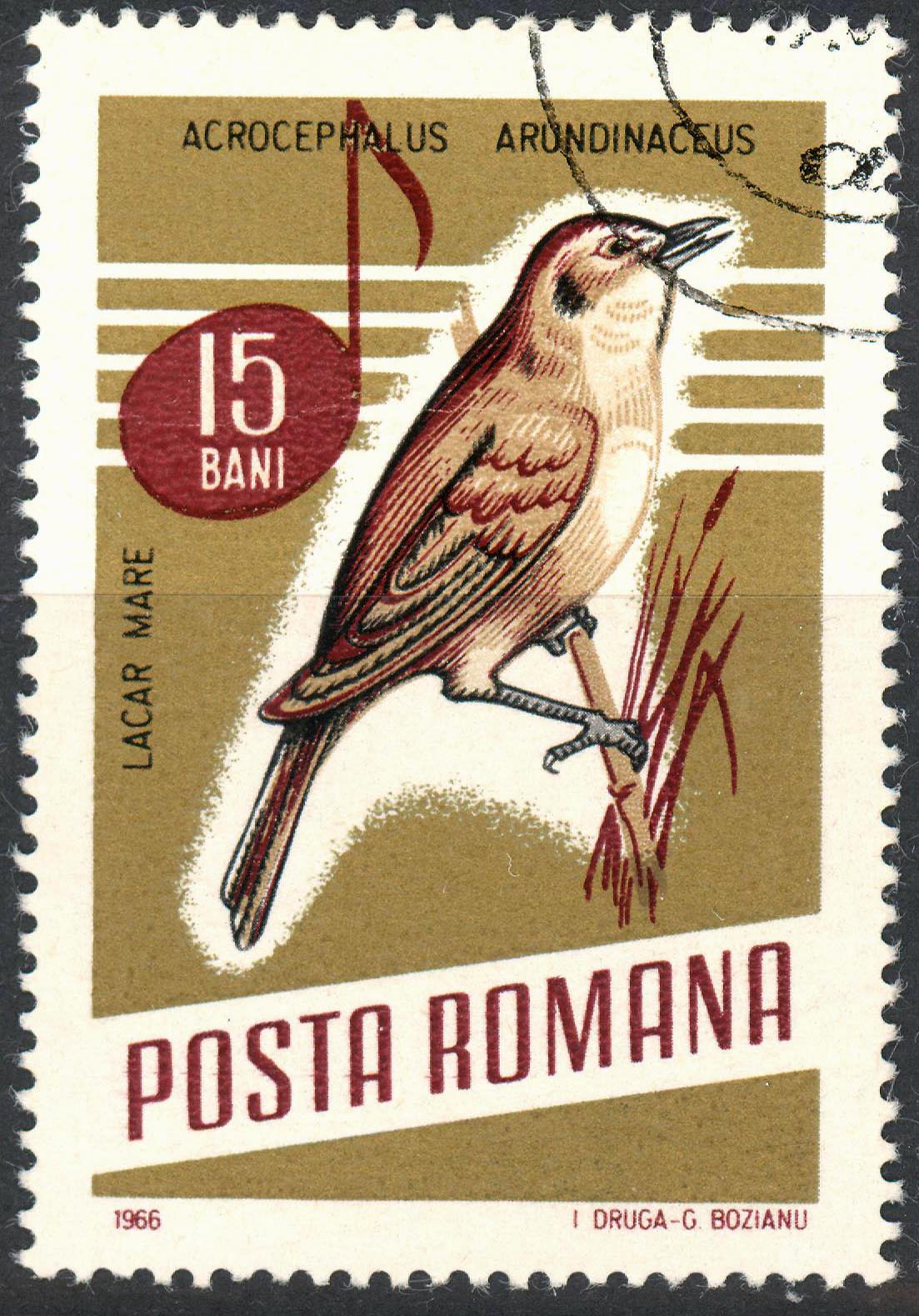Romania #1839 (1966) – Great Reed Warbler (Acrocephalus arundinaceus)
$0.35
Romania #1839 (1966) – Great Reed Warbler (Acrocephalus arundinaceus)
Description
Romania #1839 (1966) – Great Reed Warbler (Acrocephalus arundinaceus)
he Great Reed Warbler (Acrocephalus arundinaceus) is a large, insectivorous bird that belongs to the Acrocephalidae family of warblers. Here is some information about the Great Reed Warbler:
- Distribution: Great Reed Warblers have a wide distribution range, primarily found in Europe and Asia. They breed in Europe, from the British Isles to Central Asia, and they winter in Africa, south of the Sahara.
- Physical Description: These birds are relatively large for warblers, measuring about 18 to 21 centimeters in length. They have a plain brownish-grey upper body with a whitish underbelly. They often have a prominent eye stripe and a long, sturdy bill.
- Habitat: Great Reed Warblers are typically found in reed beds, wetlands, and marshes, where they build their nests in tall reed beds. They are well adapted to these habitats and are often heard singing from within the dense reeds.
- Behavior: Great Reed Warblers are known for their loud, melodious, and repetitive songs. They are skilled singers and use their songs to establish territories and attract mates. They are often heard more than they are seen, as they tend to remain hidden in the reeds.
- Diet: Their primary diet consists of insects, spiders, and other small invertebrates. They forage within the dense vegetation of their wetland habitats, gleaning insects from the vegetation or catching them in flight.
- Breeding: Great Reed Warblers build cup-shaped nests in the reeds, usually close to the water’s surface. They lay a clutch of 4 to 7 eggs, which are incubated by the female. Both parents are involved in feeding the young birds.
- Migratory Behavior: They are migratory birds, with their breeding season in Europe during the summer and their wintering season in Africa, often south of the Sahara Desert. They undertake long-distance migrations, and their journeys can be thousands of kilometers.
- Conservation: The Great Reed Warbler is generally considered a species of “Least Concern” in terms of conservation status. However, like many wetland birds, they can be impacted by habitat loss and degradation. Conservation efforts often focus on preserving and restoring wetland habitats to support populations of Great Reed Warblers and other species that depend on these environments.
Great Reed Warblers are fascinating birds known for their distinctive songs and their preference for wetland habitats. They are a subject of interest for birdwatchers and ecologists who study wetland ecosystems.
Ready to ship in 3-5 business days from United States (US)
Additional information
| Condition | |
|---|---|
| Country | |
| Scott Number | |
| Stamp Format | |
| Stamp Type | |
| Year of Issue |

















